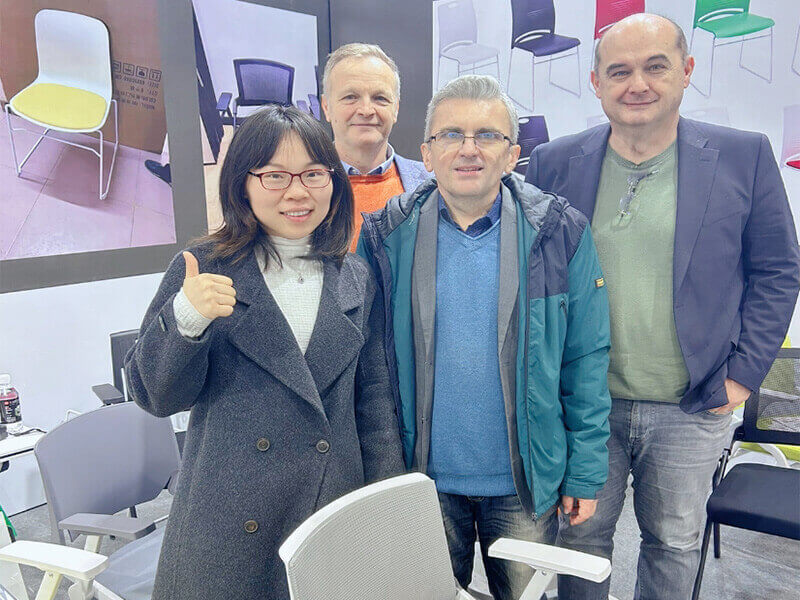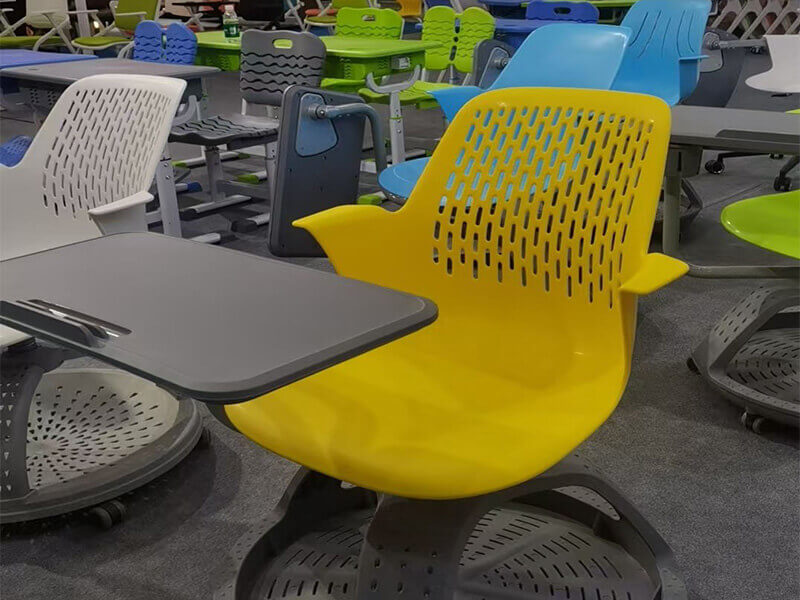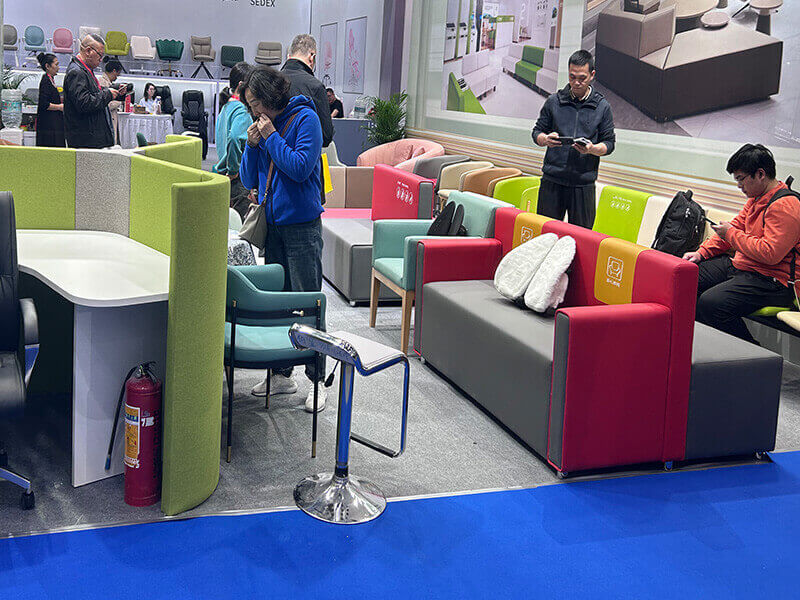The CIFF held in guangzhou from 28th-31th,Mar,2025 successfully brought together industry leaders, innovators, and buyers in the office furniture sector.
This year’s event showcased cutting-edge trends in ergonomic design, sustainable materials, and smart workspace solutions, reinforcing its position as a premier global platform for the industry.
We welcome warmly the customers from all over the world come to our booth,this time we presend our popular training table and chairs,steelcase node chairs,school table and chairs,and some office table and chairs,

Here’s a focused analysis of the March 2025 office furniture trade shows, based on emerging trends, industry projections, and post-pandemic market shifts:
—
1. Overall Performance: Steady Growth with Nuances
– Attendance: Major global exhibitions (e.g., CIFF Guangzhou, NeoCon Chicago, Orgatec Cologne) reported 5–10% attendance growth vs. 2024, with strong Asia-Pacific turnout. Hybrid (physical + virtual) participation stabilized post-pandemic.
– Orders: Mid-to-high-end modular and smart furniture drove deals, though bulk orders were slower due to lingering economic volatility.
—
2. Top Trends Dominating 2025
– AI & Automation:
– Self-adjusting desks/chairs(e.g., AI-posture correction, IoT sensors) were highlights.
– Voice-activated workspace systems (e.g., lighting, storage) gained traction.
– Circular Economy:
– 100% recyclable materials (e.g., algae-based plastics, mycelium composites) became a key selling point.
– Leasing/remanufacturing models (for cost-sensitive buyers) expanded.
– Hybrid Work 3.0:
– “Office-as-a-Service” setups(modular pods, hot-desking tech) appealed to coworking spaces and corporates.
—
3. Regional Breakdown
China (CIFF Guangzhou/Shanghai)
– Domestic focus: Local brands led with cost-effective, tech-integrated solutions (e.g., compact sit-stand desks for small spaces).
– Export challenges: Tariffs and competition from Vietnam/India impacted Western orders, but BRI markets (Middle East, ASEAN) grew.
U.S. (NeoCon Chicago)
– Wellness-first designs: Mental-health-friendly lighting (circadian rhythm tech) and acoustic pods were top trends.
– Slow corporate spending: Enterprises prioritized refurbishment over full refits due to recession fears.
Europe (Orgatec, Milan Workplace)
– Green regulations: EU’s EPD (Environmental Product Declaration) mandates pushed sustainable innovations.
– Luxury hybrid solutions: High-end biophilic designs (e.g., live plant-integrated partitions) attracted architects.
—
4. Key Challenges
– Supply chain bottlenecks: Post-Red Sea disruptions, lead times for imported materials (e.g., German motors for smart desks) lengthened.
– Overcrowded innovation: Buyers faced decision fatigue with similar “AI-powered” claims across brands.
—
5. Outlook for 2025–2026
– Opportunities: Demand for small-scale, adaptable office solutions (SMEs, remote teams) will rise.
– Risks: Geopolitical tensions (e.g., trade wars) may dampen export-reliant exhibitors.
—
Final Note: March 2025 solidified sustainability and AI as non-negotiables, with regional adaptations shaping success. For exhibitors, blending tech, eco-certifications, and flexible pricing was critical.











